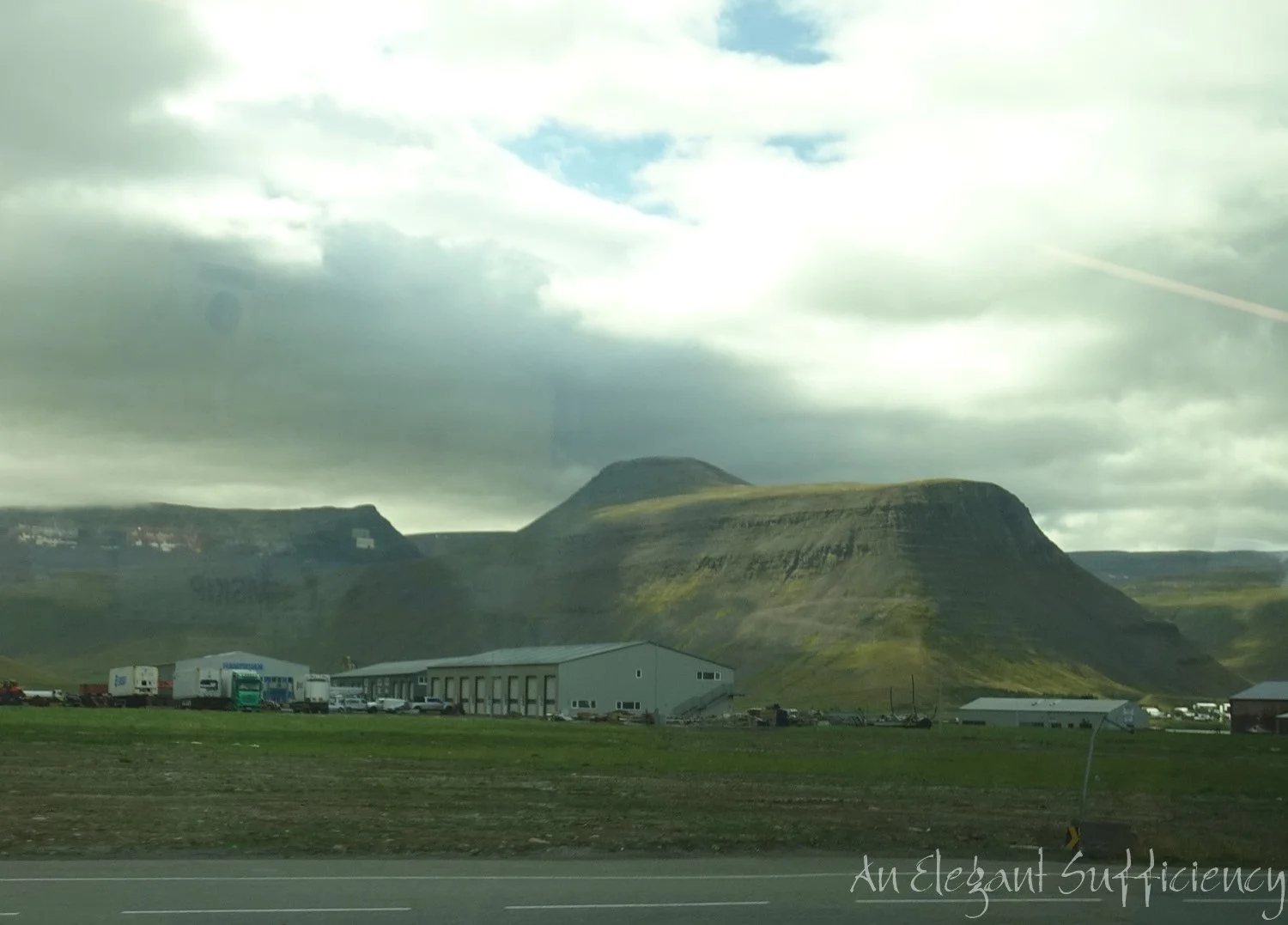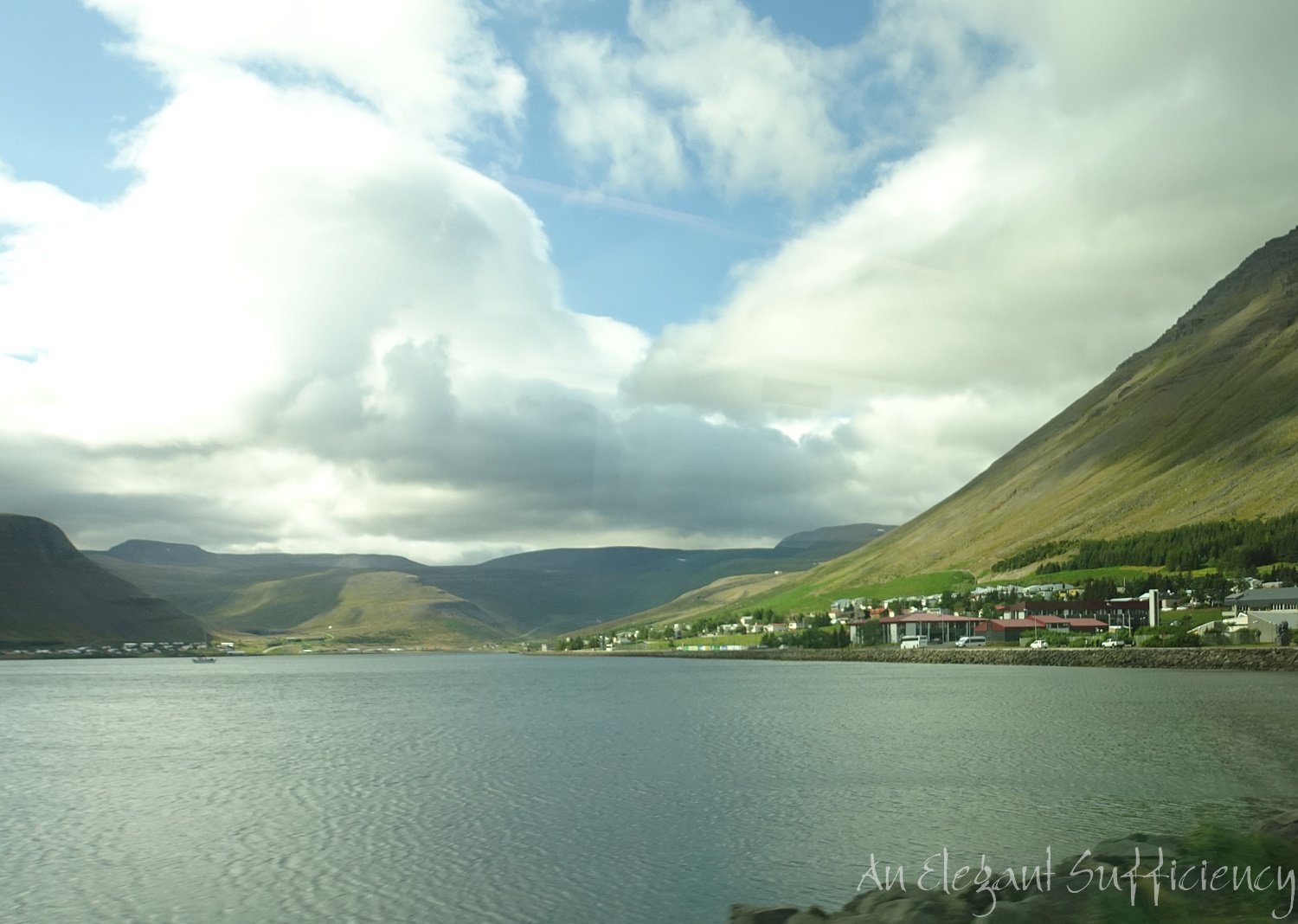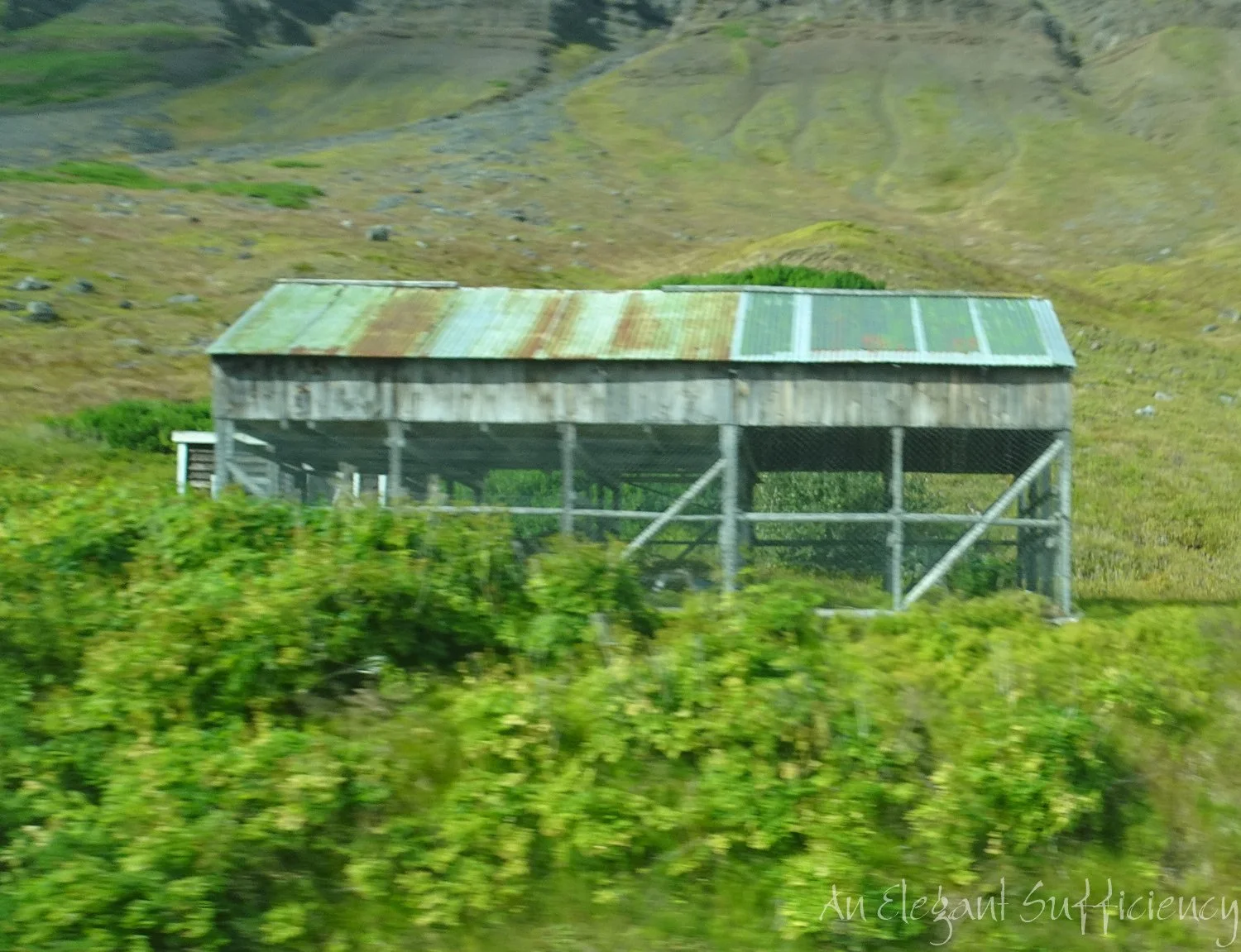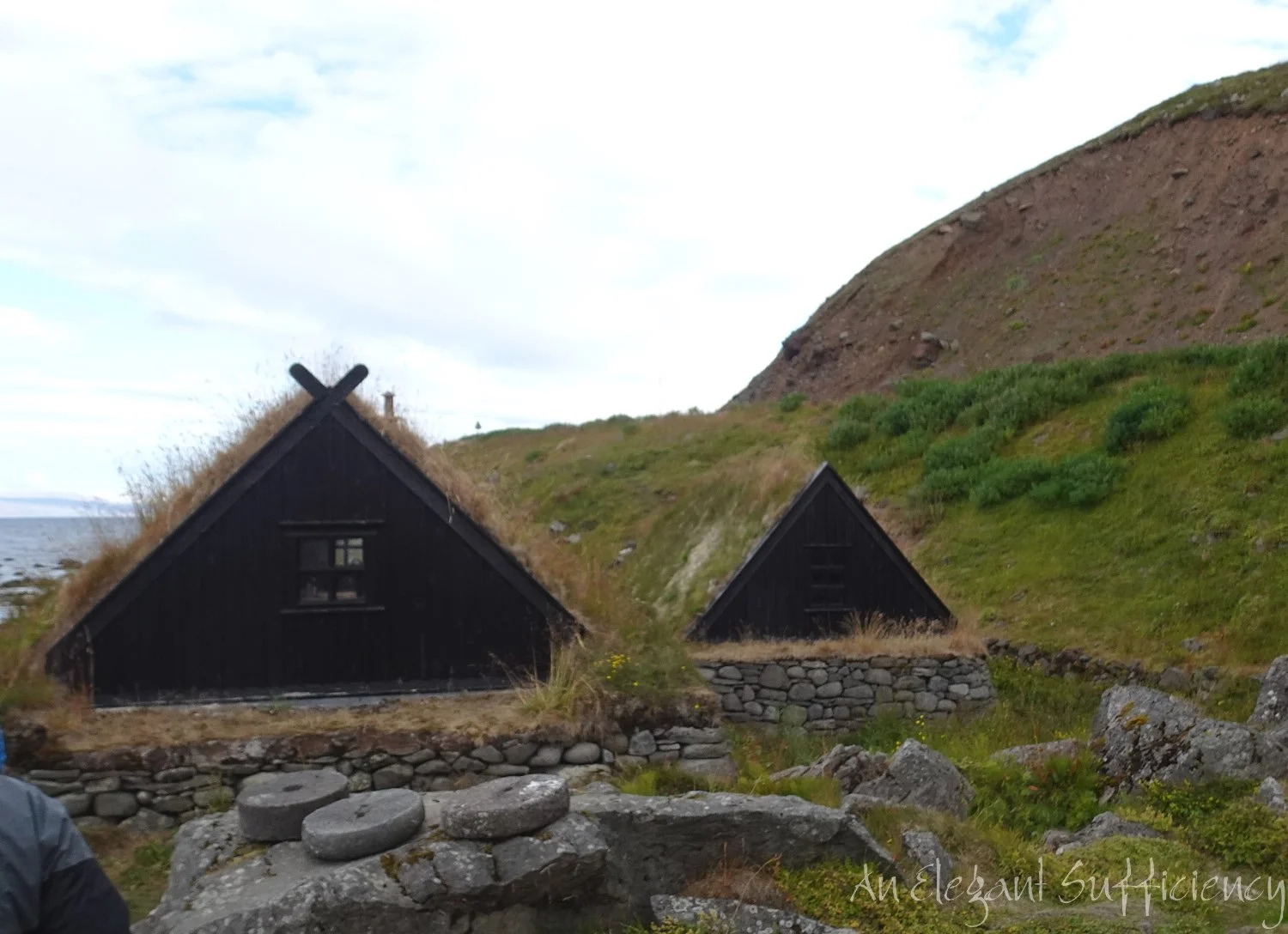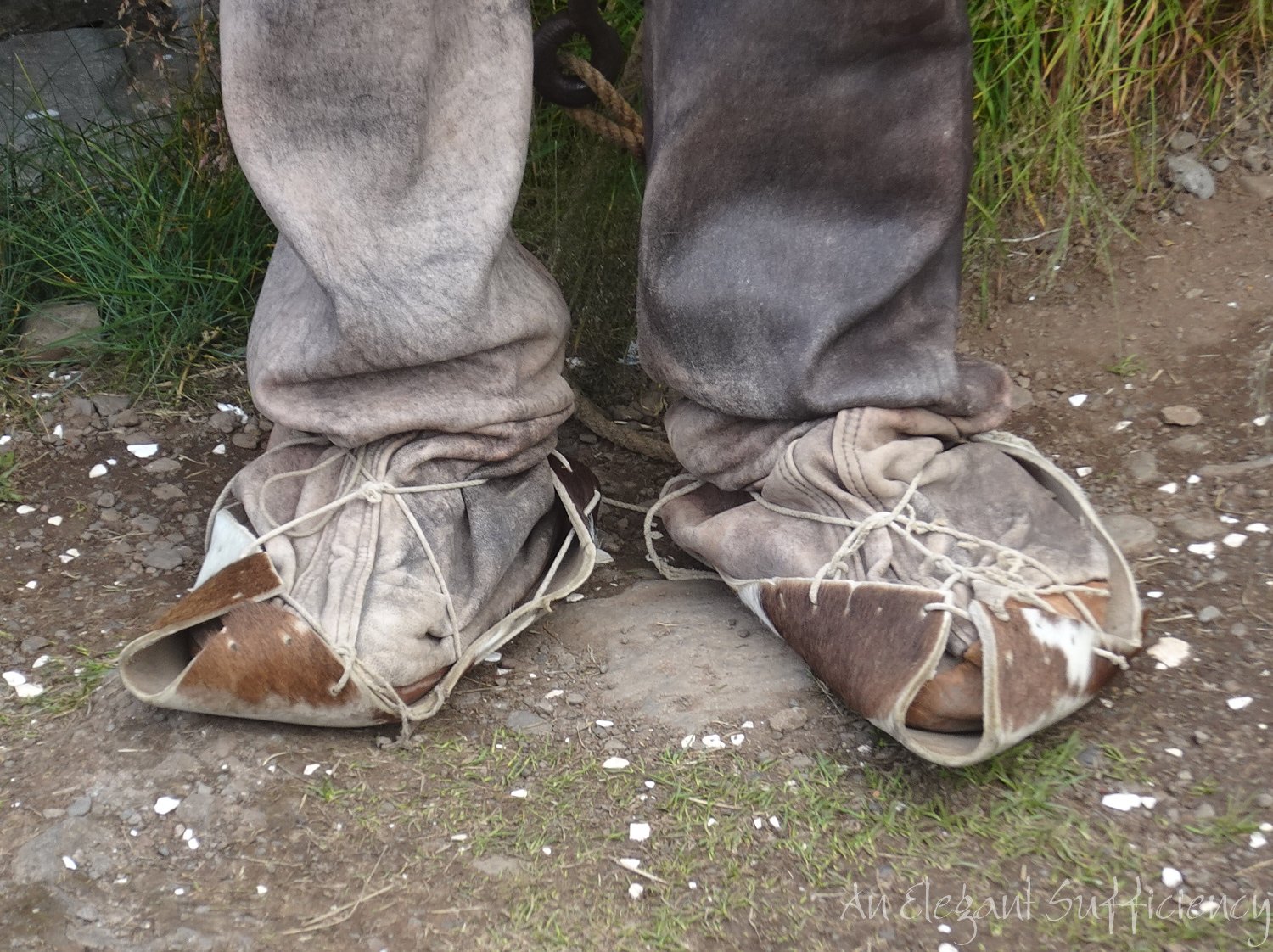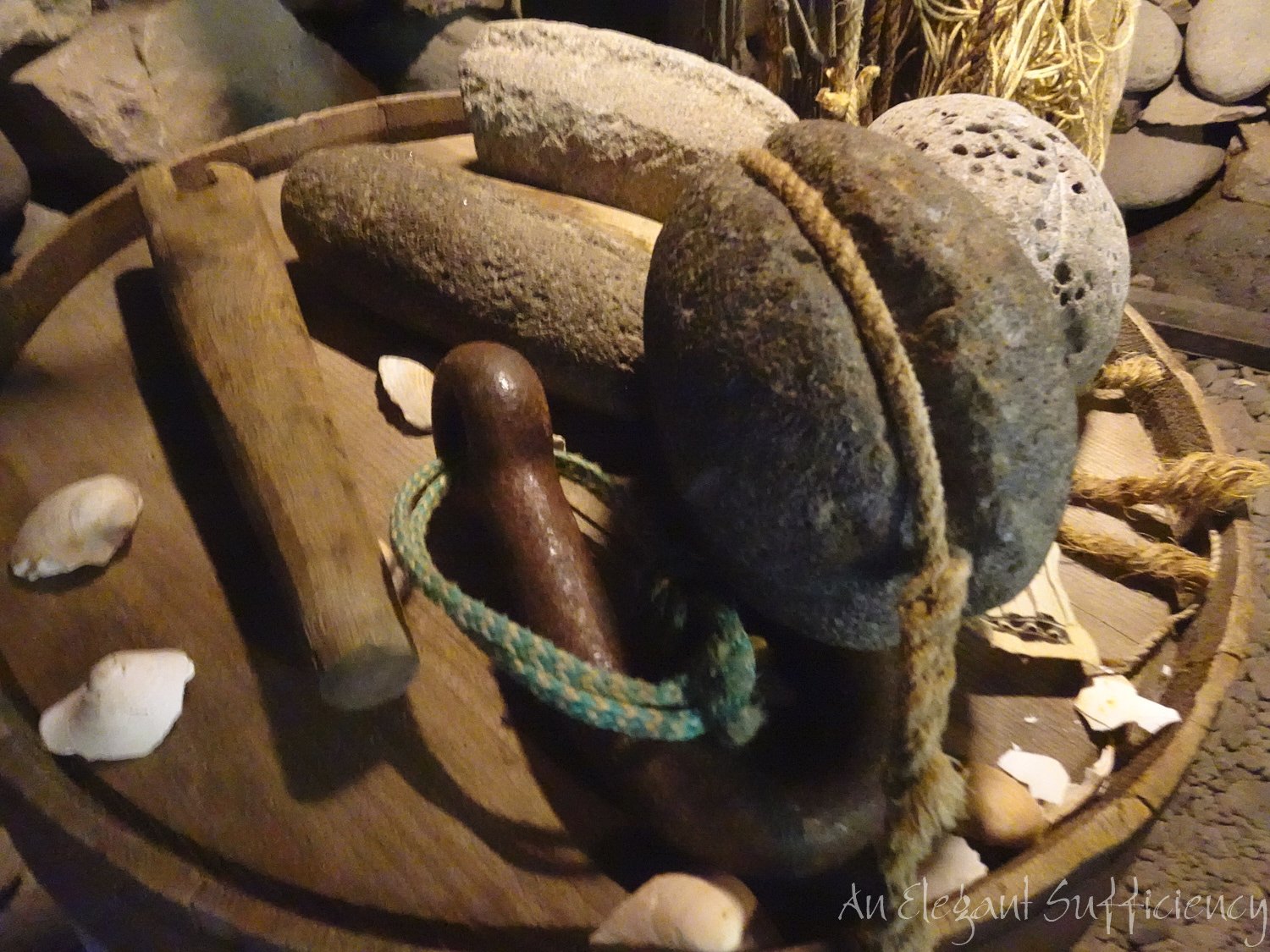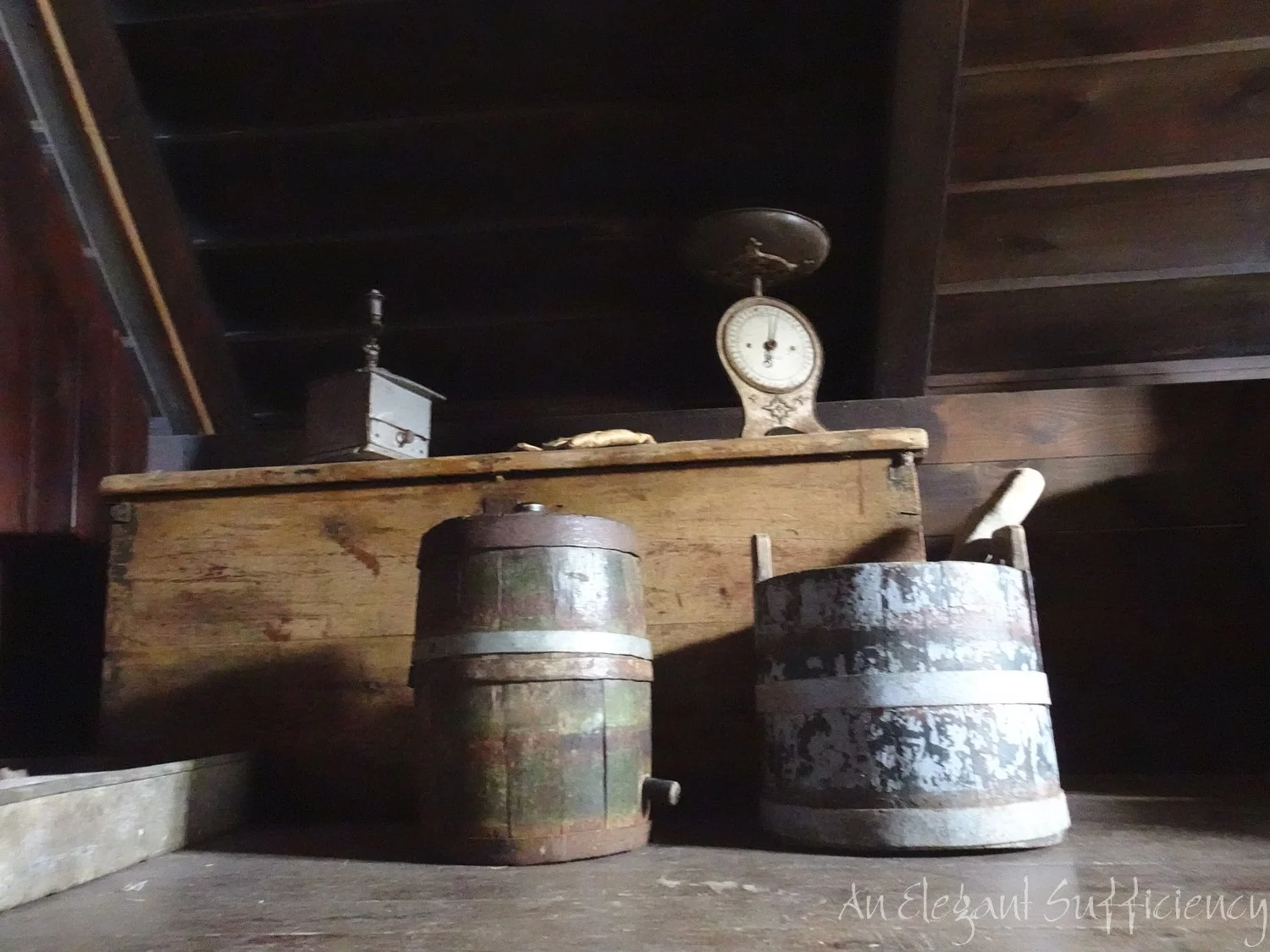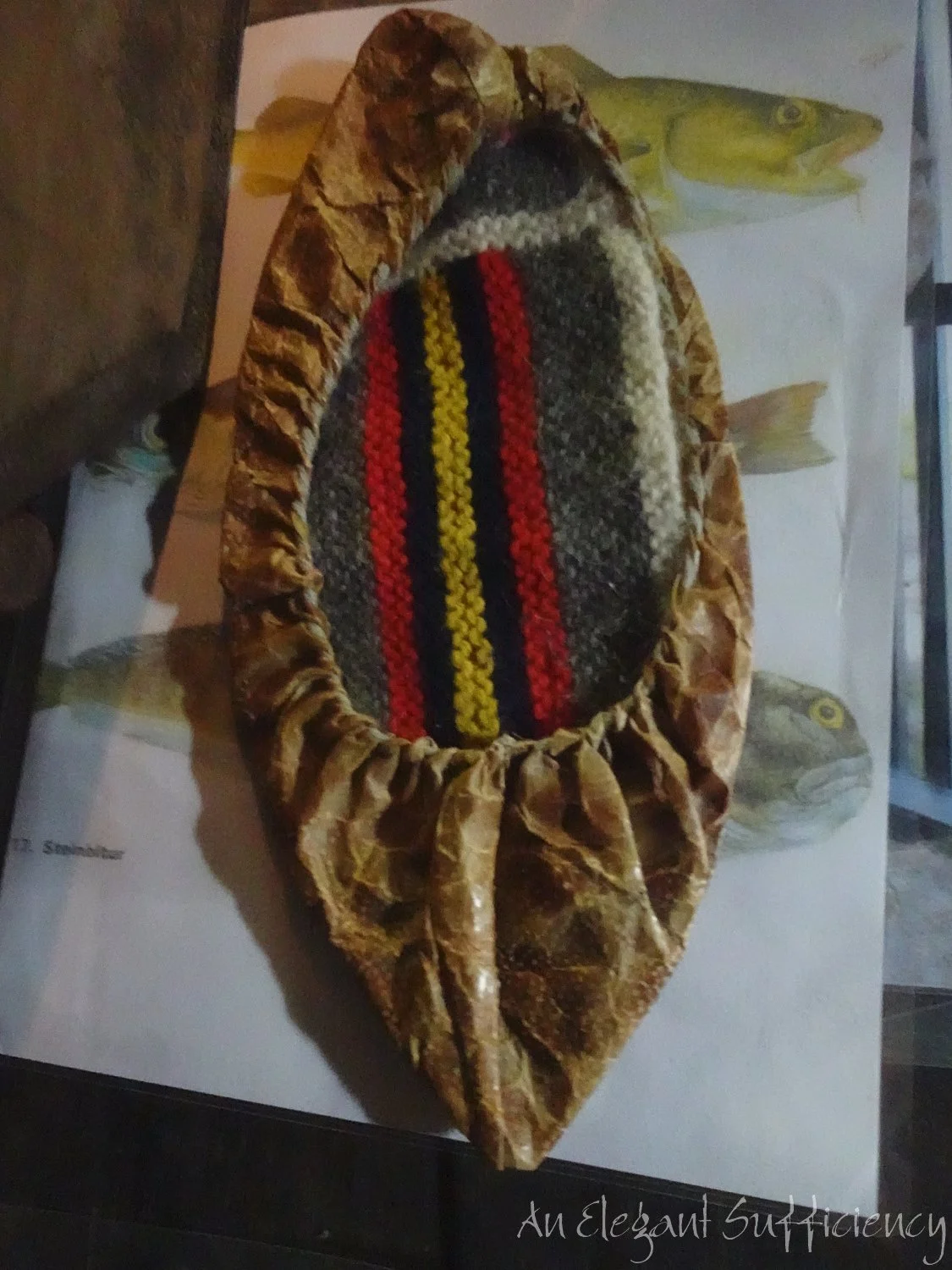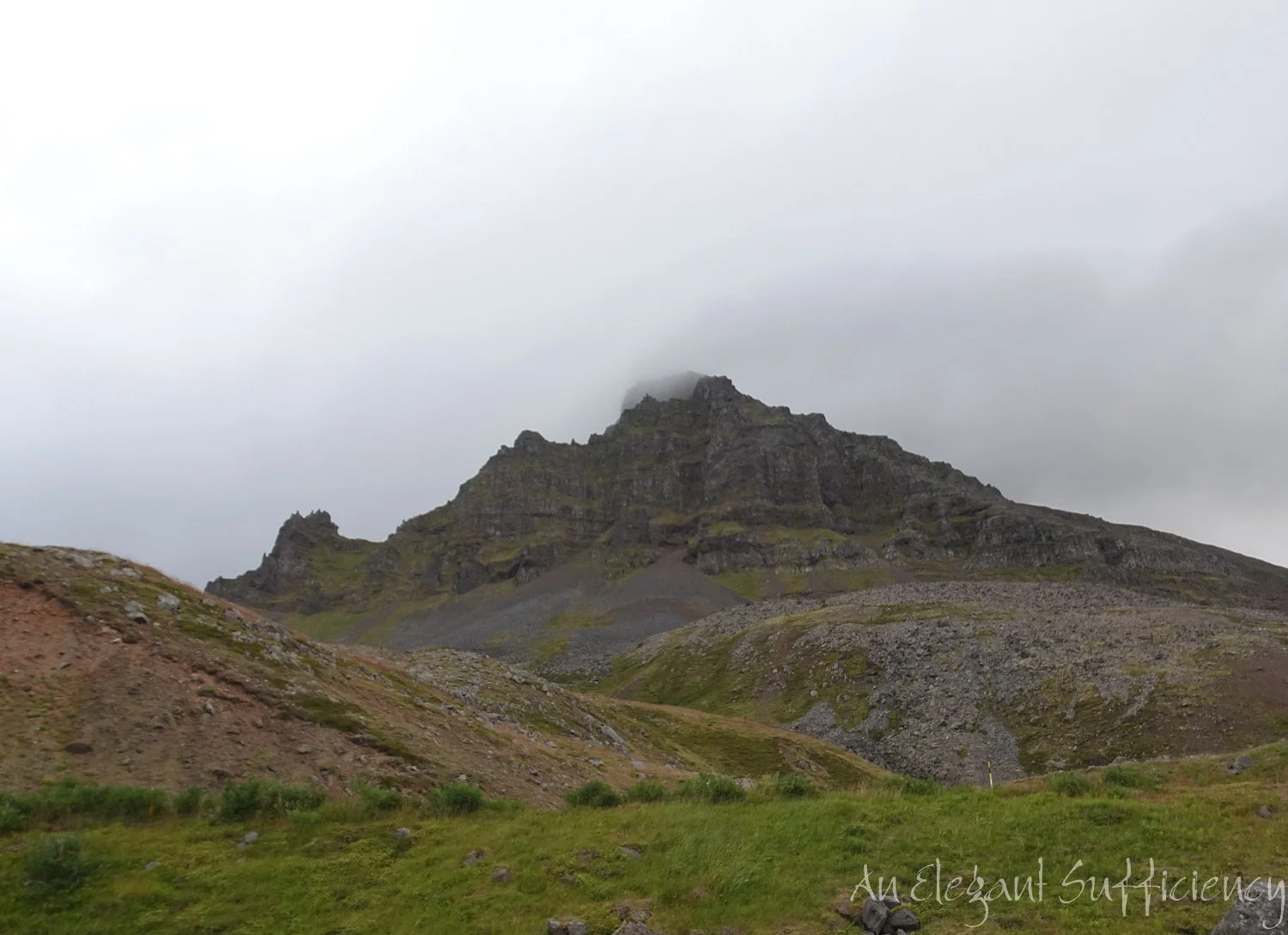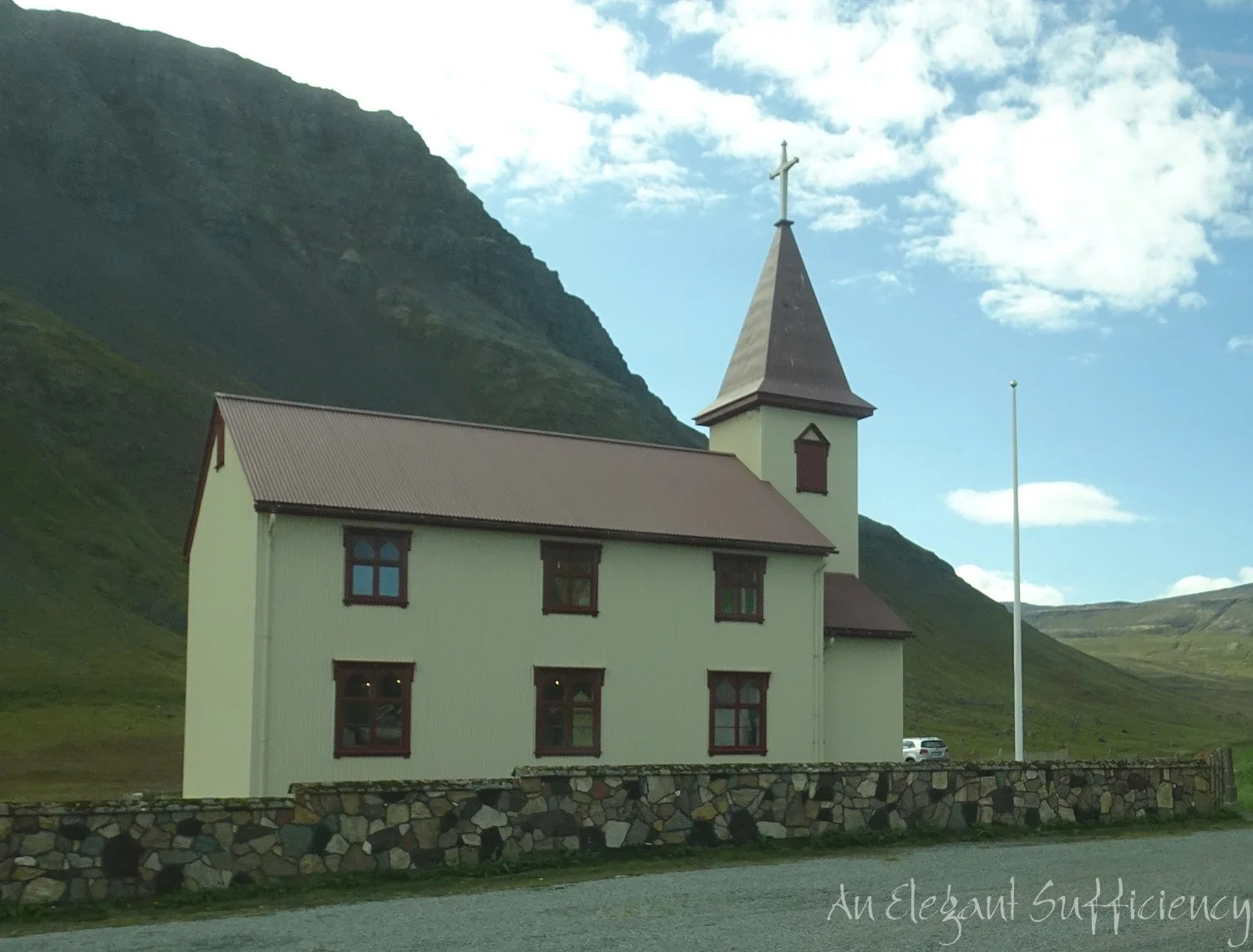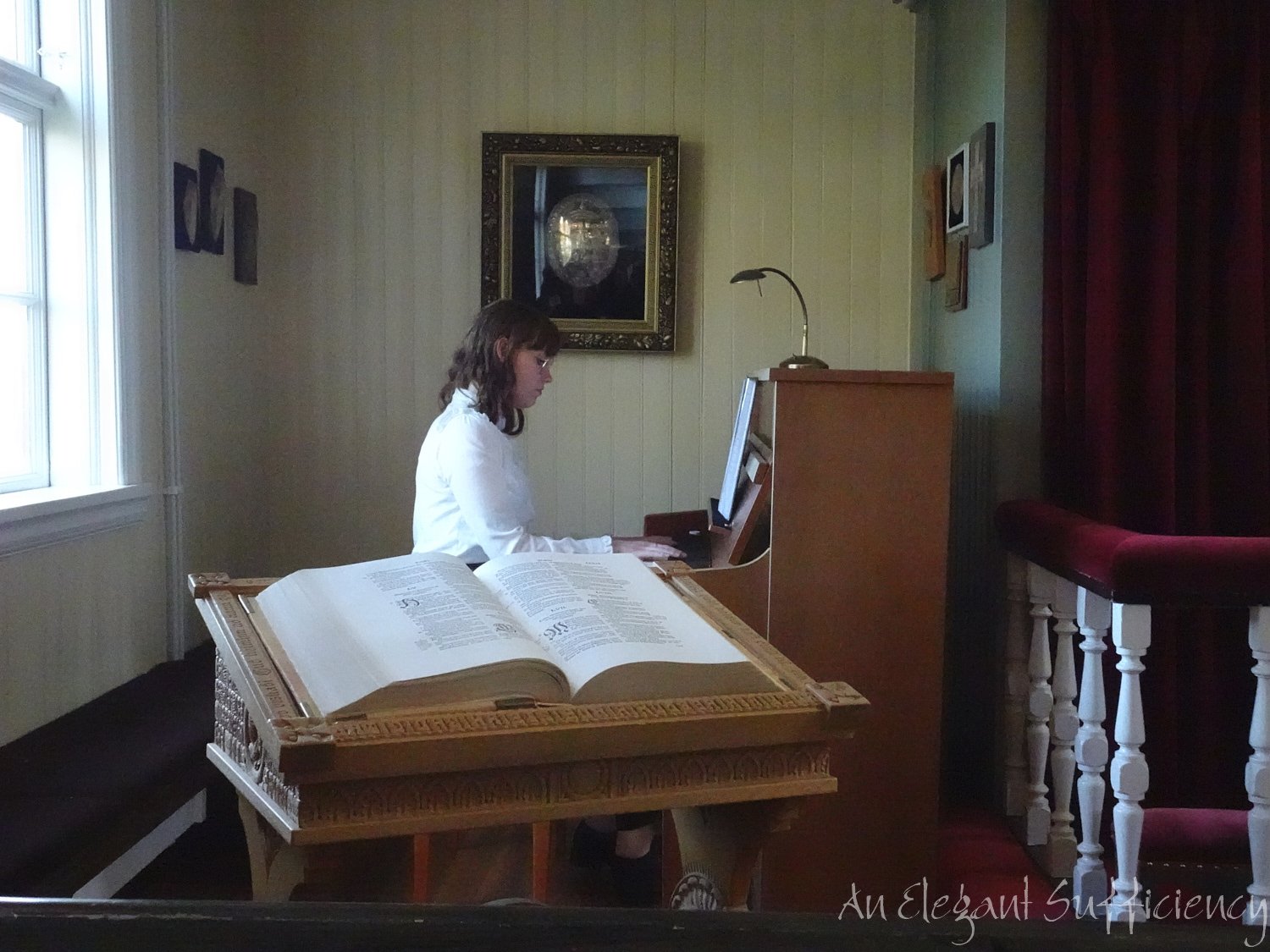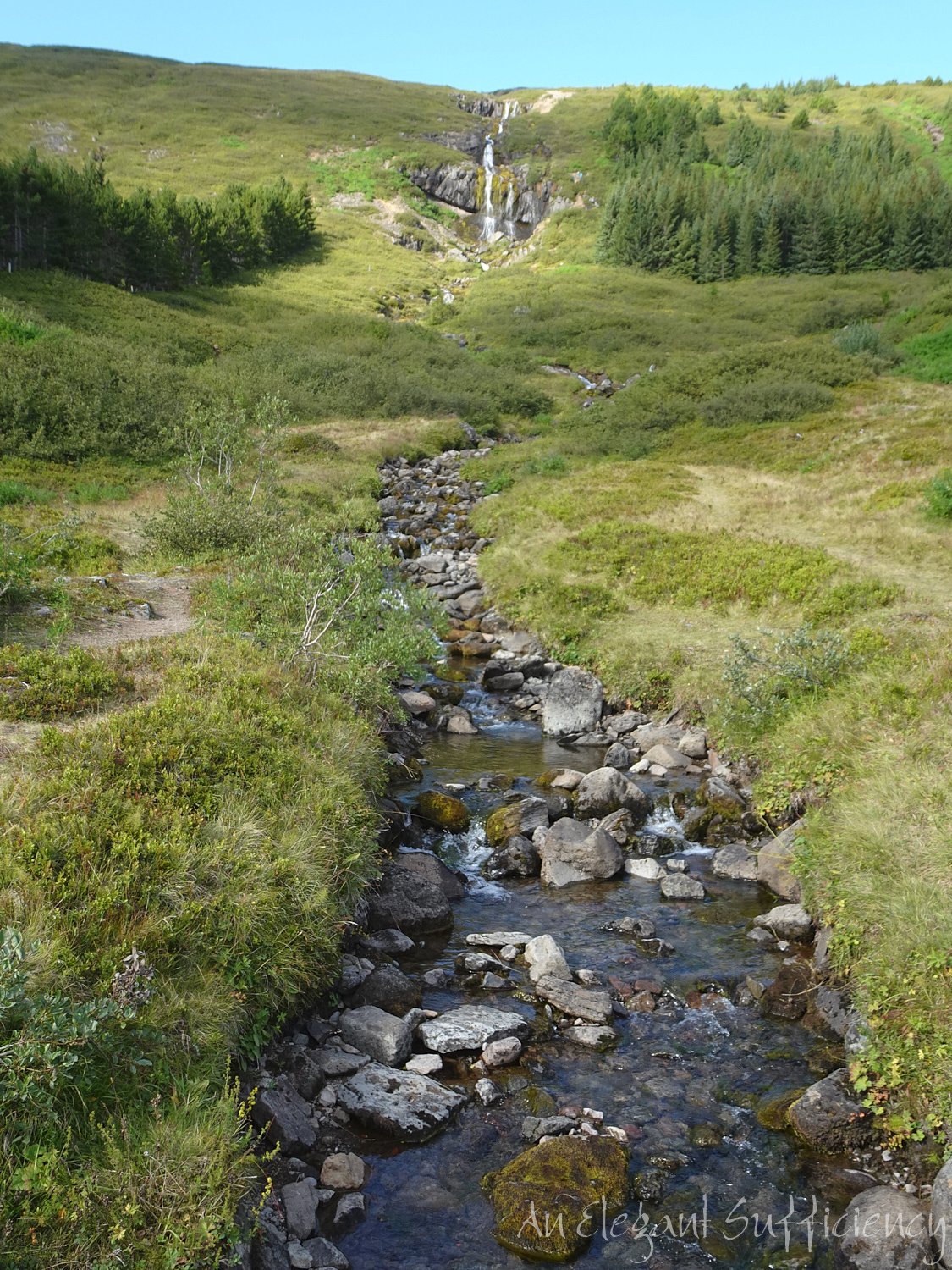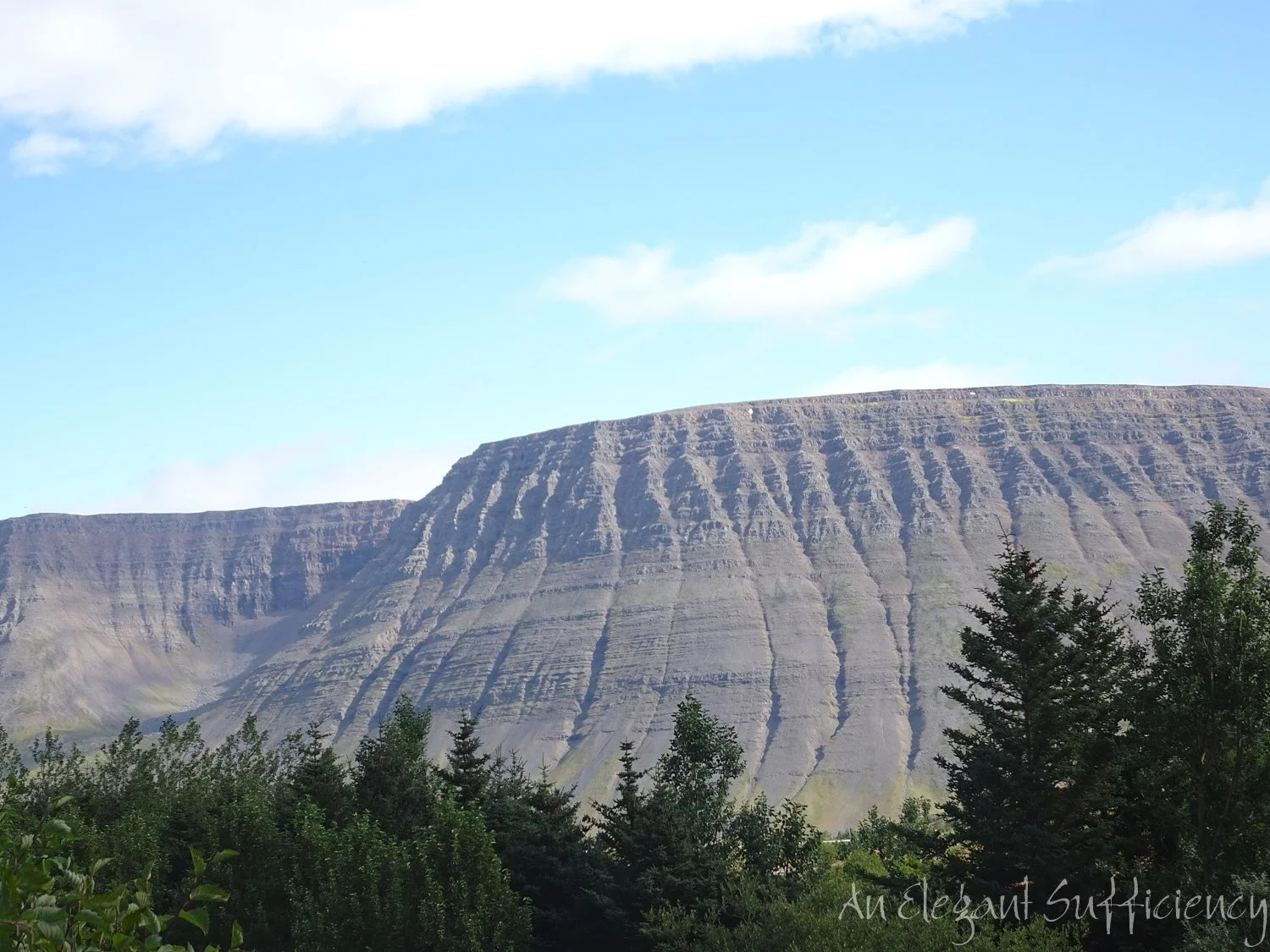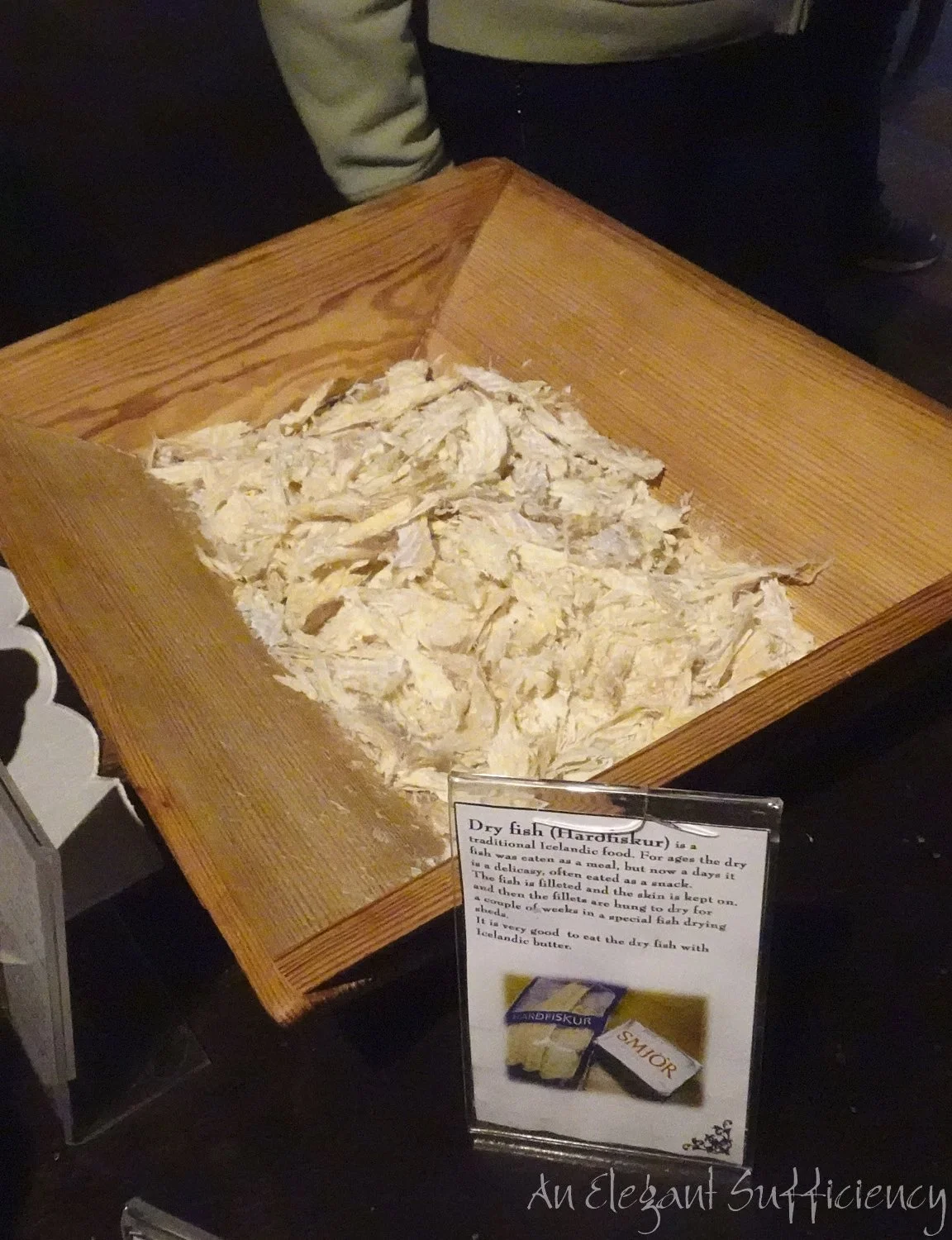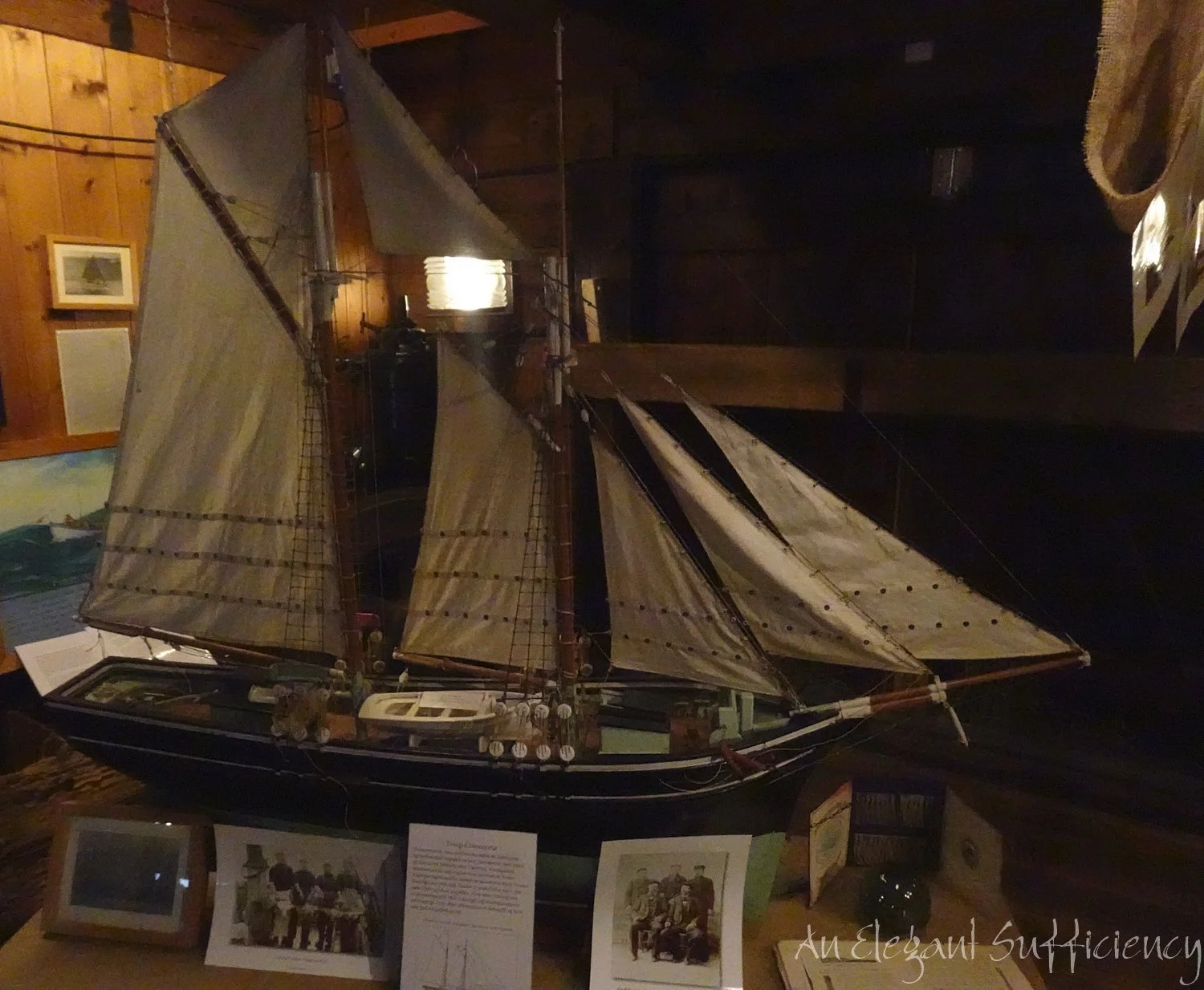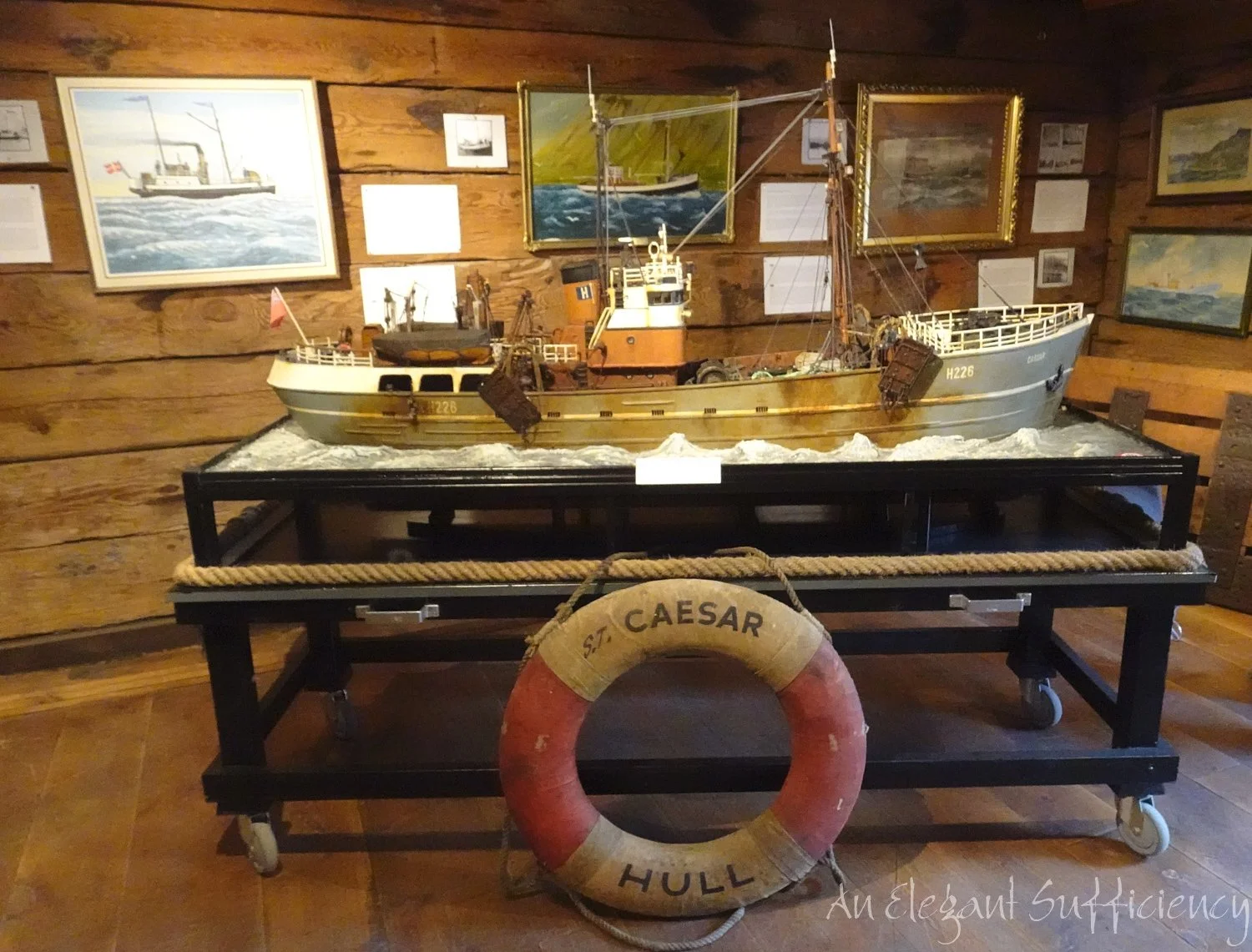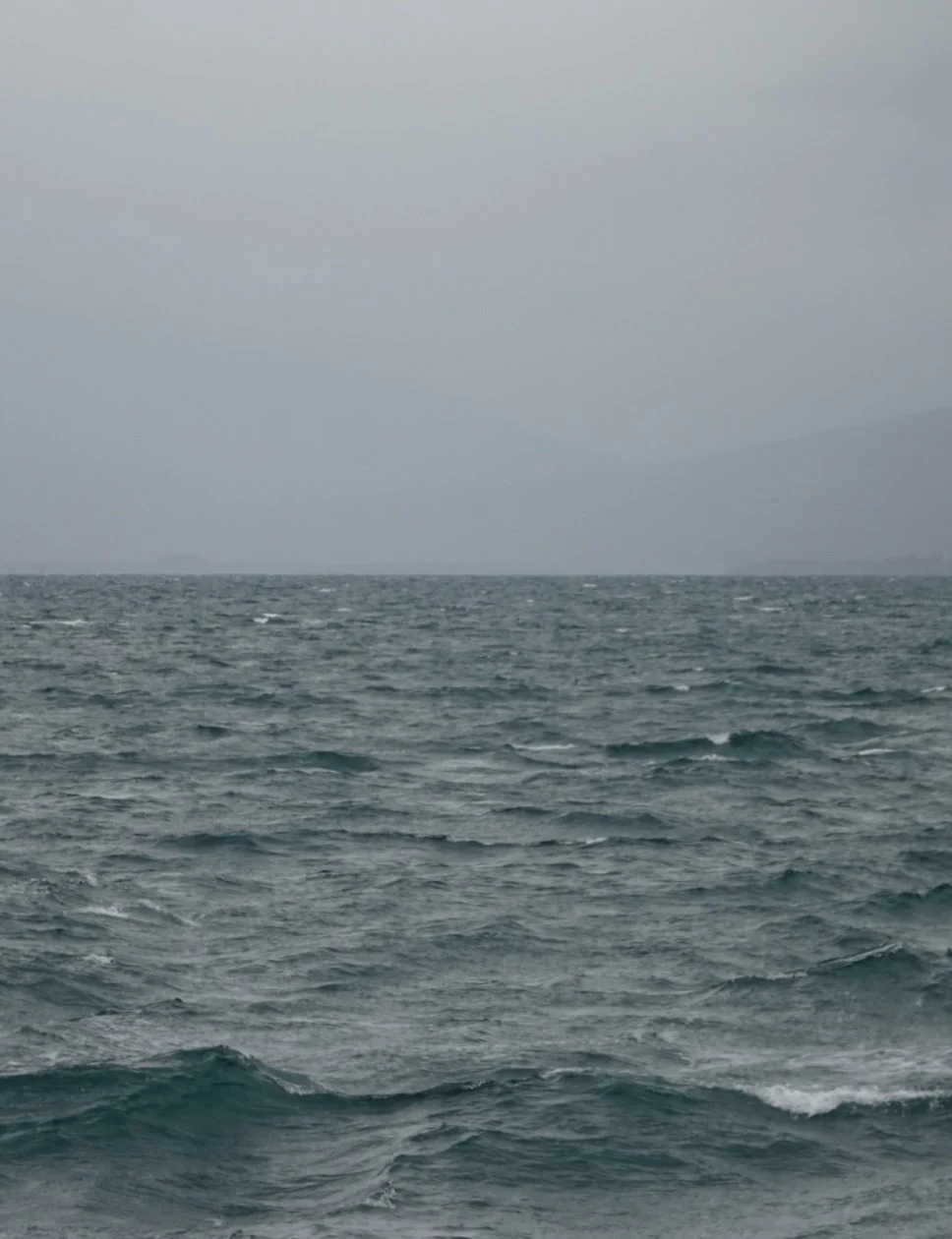Thank you for waiting, Johann
Before I tie up all my Iceland loose ends, I need to return to Ísafjörður to tell the story of our lovely day spent there in the company of our sweet guide Elizabeth, Johann the fisherman and a young woman who sang some traditional songs so beautifully for us.
We began in this distinctive glacial landscape, driving out of the port towards Bolungarvík .
This area is a primary fishing location and amongst the small craft in the harbour were a couple of larger trawlers.
As we drove, Elizabeth told us a little about herself and her studies - originally from Montreal, Canada, she is studying coastal and marine management at the small university here and had clearly embraced life in small town Iceland with enthusiasm.
She pointed out the wooden structures along this road, built for drying fish she said.
And as we turned right to take the road towards Ósvör, she pointed out the Tradarhyrna mountain opposite, the source of a local legend. I jotted down a few details but rather than cobble something inaccurate together, I’ll offer the story as told on the Westfjords website:
According to the Book of Settlements, Bolungarvik was settled by two siblings, Thuridur Sundafyllir and her brother, Thjodolfr. As the story goes, they had a falling out and, since they were both accomplished sorcerers, they laid a curse on each other. Thuridur cursed her brother to turn into a monolith on which all birds would defecate. Thjodolfr, however, turned his sister into a block of stone, and she would stand forever where the wind blew the most. Yes, we Icelanders can be a bit dramatic! Both of these pillars have collapsed now; the pillar that was said to be Thuridur broke in half in 1936, and legends say the very same night Thjodolfr’s pillar sank into the sea.
I enjoy scribbling little notes in my notebook and find them useful at times like this when, in spite of thinking “I’ll remember that”, in fact, I often don’t! So, the odd photo of a signpost is very useful as a place marker.
Our first stop was the Ósvör Maritime Museum, a collection of wooden structures which would have housed two crews of six fishermen (and one woman to take care of them!)
It was here that we met Johann, dressed in the clothes these fishermen would have worn when taking out that small rowing boat to earn a living by catching fish. He explained that his outfit was made from soft lambskin which was warm and weatherproof.
His trousers were held up with the rope around his waist, tied between his legs too, to offer something for his crew to hang onto if he fell overboard! His trousers were made in one piece, including feet, but as the lambskin wasn’t so strong, pieces of cowhide were tied over as “shoes”.
Most intriguing were his hand-knit mittens, made with two thumbs. Joking that they were made for the rare two-thumbed Icelanders, he went on to offer the real reason: that the hard work of rowing meant that the palms of mittens like this would wear out quite quickly. Having a second thumb knitted in was useful because if the palm wore out whilst at sea, the fisherman could turn the mitten around and use the other side to get home. Great design feature!
Happy to pose for photographs, he explained that the boat was launched from this pebble beach with the aid of bones placed under the hull.
Showing us the tools of the trade more closely, he continued to answer questions too. But my curiosity was getting the better of me - I wanted to see inside those huts!
Each one was built into the ground by some three feet or so, creating a warm place to sleep and store all the paraphernalia that would be needed. Cosy, it was not and only when reviewing my photographs do I notice there are no “beds”.
Most things were hanging from the wooden beams and whilst I recognise the nets and the stuff needed to maintain them, there was a lot of other stuff in there about which I hadn’t a clue.
Have a guess!
There were weights made from stones.
Plenty of rope and pulleys, again, made from stones.
A few more domestic bits and pieces here and there and what looks like a basic loud-hailer hanging up there at the back.
Not much comfort at all really.
Except a pair of fishskin slippers with knitted insoles: hardly the kind of thing to joyfully slip your feet into! Life was tough.
The third wooden shed here was the same kind of thing as we’d passed along the road earlier: a fish drying house.
I peered through the slats. Was there fish in there? Of course there was!
And there was also a door enabling a better view inside! Not the most fragrant of places I’ve been.
As we said ‘bye to Johann and joined our group again, I spotted the QR code on the sign and quickly snapped a photo. I’ve tried to get it to work but sadly without success - maybe you can do better?
Viewing Thjodolfr’s mountain behind us (the other half of the pair in the legend above) we continued our adventure and drove into the small town of Bolungarvik. During this journey, Elizabeth entertained us with the story of the ongoing rivalry between Bolungarvik and its neighbour Ísafjörður. One aspect relates to the population of each town, which according to Icelandic government, requires 1000 permanent inhabitants to maintain status. whilst Ísafjörður flourished, poor Bolungarvik was fading fast, until someone had a bright idea, that is…
Our next stop was in a small church on the edge of the town.
It looks more like a house with a steeple though, doesn’t it?
Inside was a small, cosy church, simply furnished with some lovely handmade features.
Sitting to one side of the altar was a young woman playing the piano. We took our seats and listened.
She performed a short set of unaccompanied Icelandic folk songs, introducing each one with a short explanation. The first was a lullaby, “sleep my little darling”, based on the true story of a woman who threw her baby into the waterfall.
Oh yes, she observed, Icelandic folk songs tend to be pretty depressing! To counter that, she played the piano and sang a love song as her final piece - concluding what had been a lovely performance.
I was glad to have a quick chance to photograph this lovely piece of Hardanger embroidery too, well used but still looking good there on the altar.
Hopping back onto the coach for the return drive through Ísafjörður, we learned of our next destination; a waterfall in a beautiful, unspoiled valley just beyond the town centre.
On this occasion, I failed in my signpost aide-memoire however. I thought this might remind me of the name of the waterfall which was the next place on our list, but sadly it’s the name of the wider area. Never mind. a quick search led me to the correct name: Bunárfoss.
It’s a popular place to hike and there were several people heading up to the falls. We didn’t have time for that, but Elizabeth immediately grabbed a large jug and headed for the stream at the bottom.
Marius, our driver then appeared and handed round plastic cups so we could try this “rejuvenating liquor”
Well, cold and fresh it was indeed. The jury is out on the effectiveness of the rejuvenating properties however!
Noticing that remarkable hillside on the other side of the valley, we continued to the last stop of our tour, the Westfjords Regional Museum in Ísafjörður itself.
The museum is in a collection of old buildings right near the pier, so having given us a short introduction, Elizabeth advised us that we were welcome to spend as long as we wanted here and walk back across to the ship, or we could stick with her and take the bus back. Given that the bus ride would be all of five minutes, we decided to go it alone, thanked her and took a look around. We’d walk back when we were ready.
First, however, there was a small treat for us to try! Some dried fish, some salted shark and a glass of akvavit. Skál!
When we’d finished chewing (well, almost!) we enjoyed looking around the model ships and learning a little about the rich fishing grounds around here.
I found the display about netting interesting.
And appreciated the reminder that nets can’t be made without some kind of twine to make them from.
Inevitably my eye fell on this corner however. Here was a fine model of a trawler by the name of Caesar. Wondering why it was here, I took a closer look and the displays on the walls around here, finding that many of the ships referred to were built or registered in to my birthplace, Hull, East Yorkshire.
What about the Caesar then? Well, it seems like she met a sorry end here in Ísafjörður.
Thankfully, we’d had a rather more successful outcome here and will remember Ísafjörður fondly.
As we’ve noted before, a great guide makes all the difference and we’d really enjoyed Elizabeth’s stories and appreciated her insight to life here. My notes remind me that we hurried back to the ship in time for Trivia and though two of our team didn’t quite make it in time, the four of us that did scored a perfect 15 and took home a few more Regent rewards!








